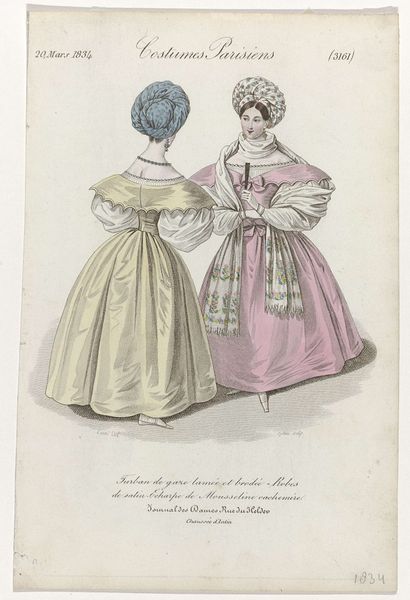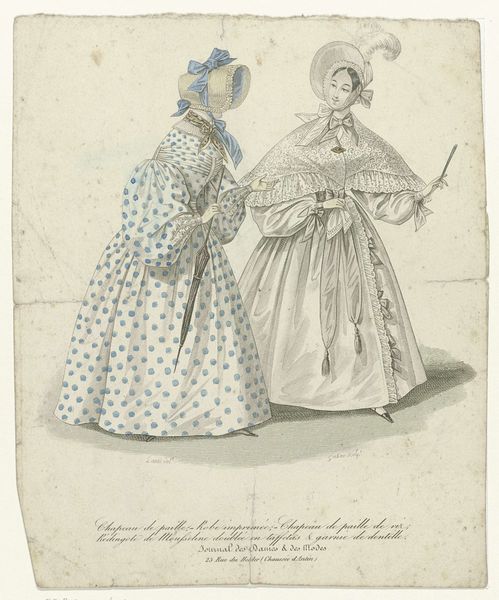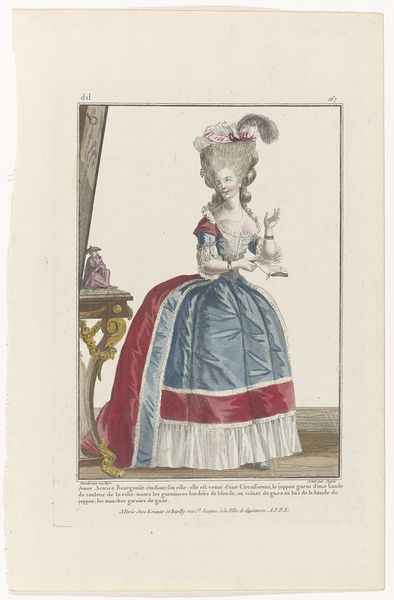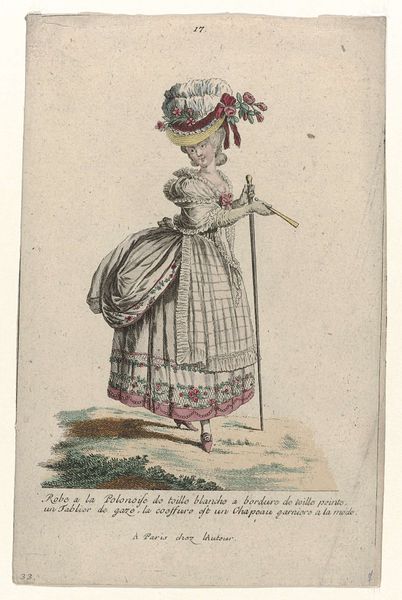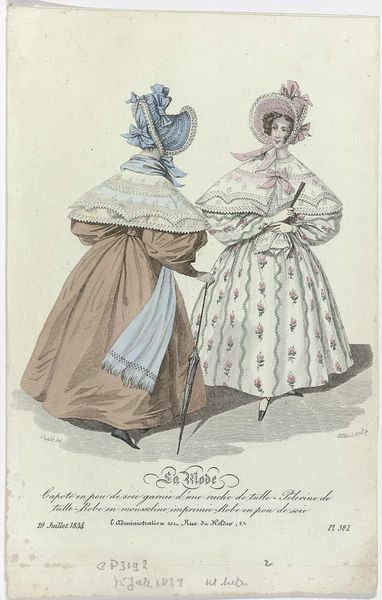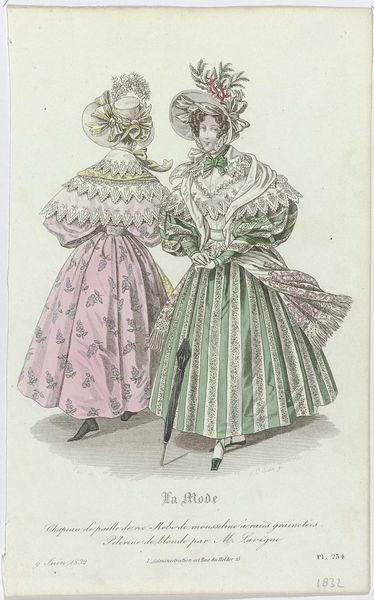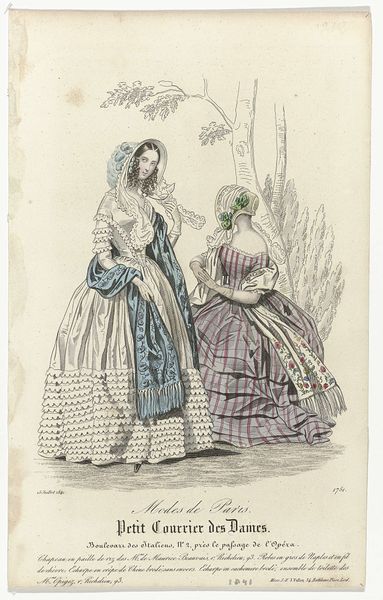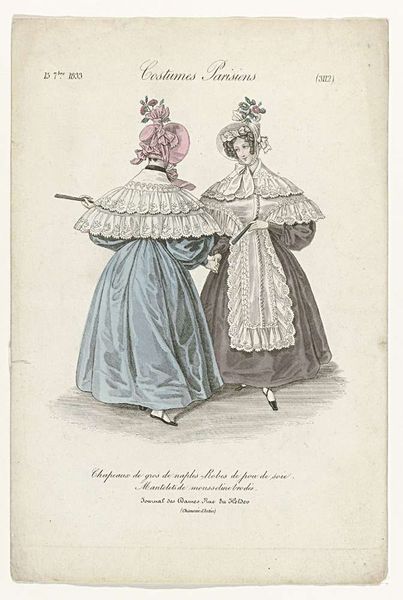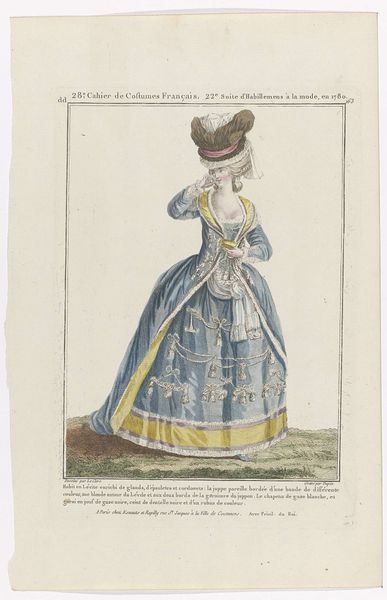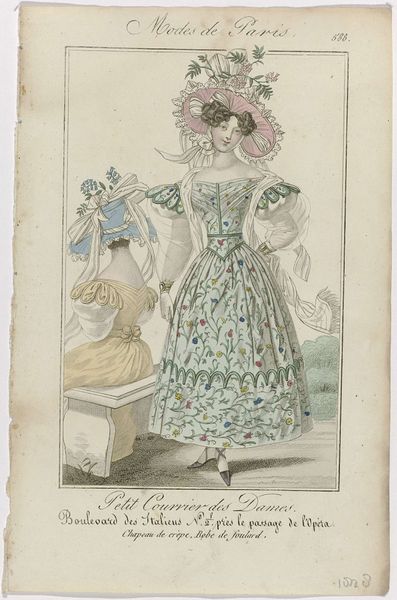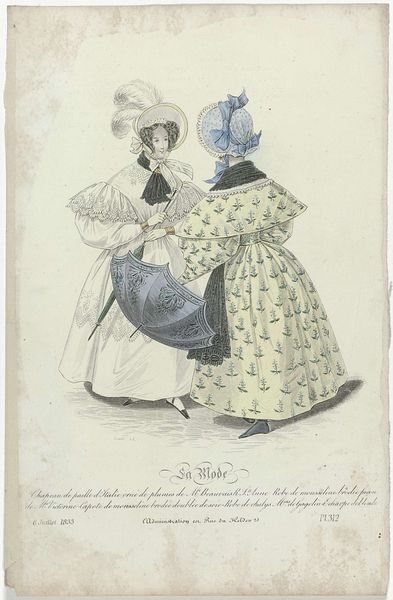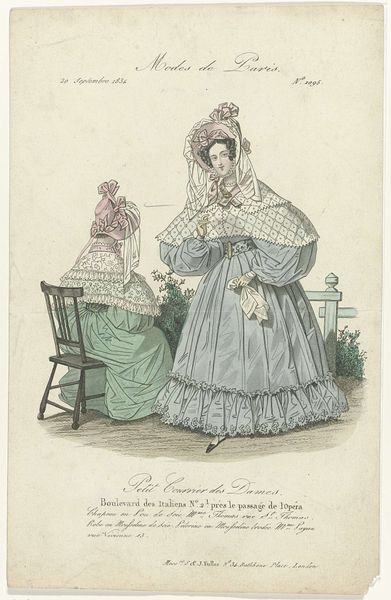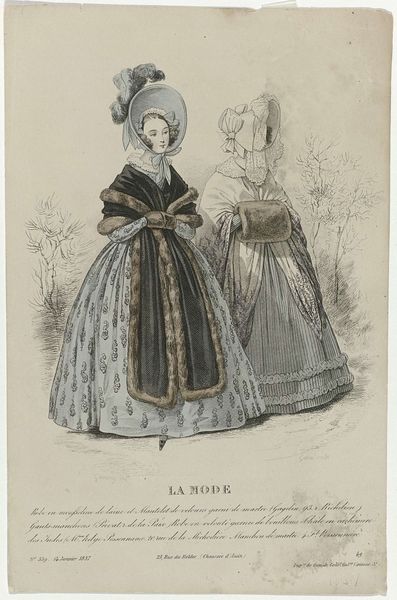
drawing, watercolor
#
portrait
#
drawing
#
watercolor
#
watercolour illustration
#
genre-painting
#
dress
#
rococo
Dimensions: height 169 mm, width 215 mm
Copyright: Rijks Museum: Open Domain
Antoine Hérisset created this print called ‘Fashion and Elegance: Hooded Cloaks, Men’s Wigs,’ dating back to the 18th century, a time of social stratification and elaborate fashion. This artwork gives us a glimpse into the sartorial habits of the French aristocracy, where clothing was an overt symbol of status and identity. The dresses’ exaggerated silhouettes and ornate fabrics illustrate the period’s emphasis on luxury and display. But it wasn't all just whimsy. Sumptuary laws dictated who could wear what, reinforcing class divisions through fashion. The hooded cloaks themselves, known as ‘Bagnole,’ protected the complex hairstyles and makeup of the elite from the elements. These details are not merely about aesthetics; they represent the constraints and expectations placed on women of the era, whose identities were often closely tied to their appearance and social roles. Consider how these images were consumed. Prints like these circulated among the elite, dictating trends and perpetuating ideals of beauty and refinement. They shape our understanding of the period, even today.
Comments
rijksmuseum about 2 years ago
⋮
During the early 18th century small series of costume plates reported on the fashion of the day. Women wore the loose-fitting robe volante, also called a ‘sack-backed gown’ in English, over which women sometimes added a short, hooded cloak known as a bagnolette. Men dressed in long coats over a waistcoat and knee-breeches. Pig-tail wigs were adorned with large bows, and tricorne hats were tucked under the arm rather than worn on the head. The two large prints from around 1760 show Parisians out for a stroll. Curiously, the women wear wide paniers (hoop skirts) for their promenade on the ramparts. In the caption underneath, they are condemned as silly slaves of fashion who blindly follow the dictates of the latest trends.
Join the conversation
Join millions of artists and users on Artera today and experience the ultimate creative platform.
